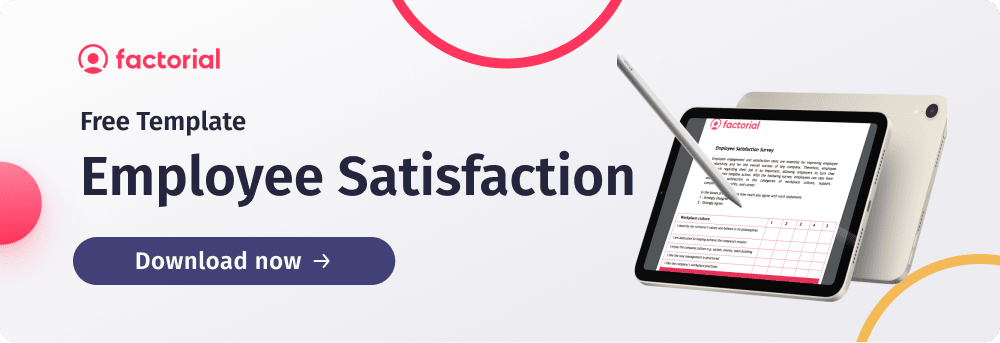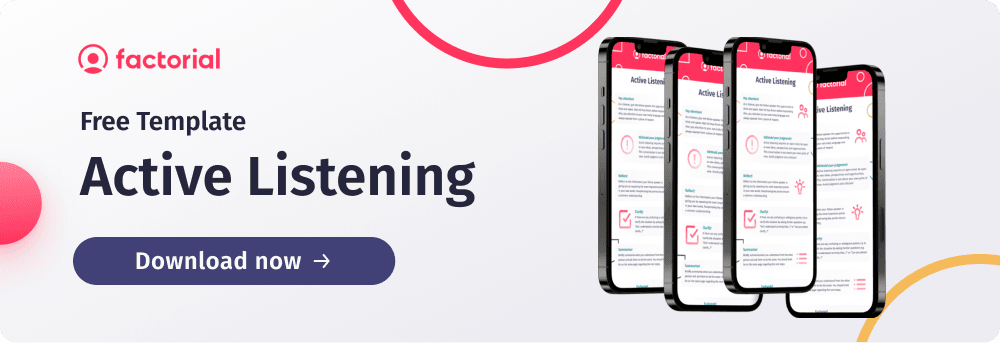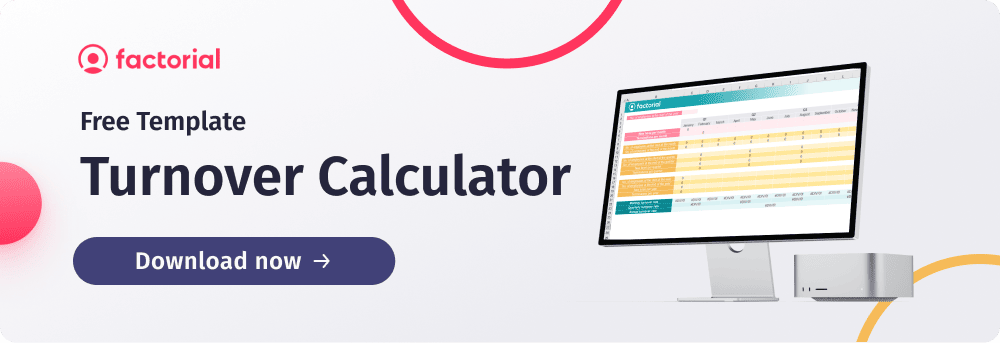According to a survey by Gallup, only 13% of employees are engaged in their work on a worldwide level. What’s more, the same survey revealed that very few employees are psychologically committed to what they’re doing and making positive contributions to their organisations. This suggests there is a pressing need for organisations to look for new ways to increase employee satisfaction and engagement. One such method is job enrichment.
So, what is job enrichment, and how can you promote it in your business? Is it the same as job enlargement? What are the benefits and what strategies can you implement to develop it?
What is Job Enrichment
Job enrichment is a strategy used to motivate employees by giving them increased responsibility and variety in their jobs. The idea is to allow employees to have more control over their work. By doing so, one can tap into their natural desire to do a good job and contribute to the overall goals of the company.
In the past, employers believed that money was the biggest motivator, and employees were encouraged to work harder by offering them a salary or wage increase. Although this is true to an extent (as we all have bills to pay), many employers are now realising that there are other less costly methods that can yield equally effective results.
People like to feel valued, challenged, and appreciated.
Job enrichment involves creating meaningful roles through feedback, encouragement, communication, and autonomy. Managers who focus on job enrichment focus on creating jobs with meaning. The aim is to create a healthy work environment and employee work-life balance that intrinsically motivates employees.
It’s about creating a work culture based on psychological safety at work where managers encourage a growth mindset and employees strive to take on more responsibility.
If you fail to enrich an employee’s job and provide them with a sense of autonomy and satisfaction, you run the risk of creating a repetitive and monotonous environment where employees feel bored, undervalued, and dissatisfied. And once an employee feels that way, a pay rise is unlikely to inspire them to give it their best.
Job Enrichment Model
The concept of job enrichment was developed by the American psychologist Frederick Hertzberg in the 1950s. It is based on Frederick’s two-factor theory. In this theory, two separate dimensions contribute to an employee’s behaviour at work.
The first dimension is known as hygiene factors. It involves the presence or absence of “job dissatisfaction”, such as wages, working environment, rules and regulations, and supervisors. When these factors are poor, work is dissatisfying, and motivation levels go out the window.
The second dimension relates to motivators. These are factors that satisfy higher-level needs such as recognition for doing a good job, achievement, and the opportunity for growth and responsibility. And it is these motivators that contribute to job satisfaction, motivation, and performance.
Frederick believed that the concept of job enrichment can help to address motivational needs. He details this in the second dimension of his theory. And he believed that there are five areas that affect an employee’s motivation level: skill variety, task identity, task significance, autonomy, and feedback.
The aim is to find ways to address each of these areas in order to achieve the desired results: increased employee motivation and personal satisfaction.
Job Enrichment vs Job Enlargement
Ok, so we understand the job enrichment meaning, but what about job enlargement? Are job enlargement and job enrichment the same thing?
In short, no. Let’s take a look at how these seemingly similar concepts differ.
What is Job Enlargement?
Job enrichment and job enlargement are both methods for increasing employee satisfaction, motivation, and engagement. However, there is a distinct difference between the two concepts.
Job enlargement is all about adding additional responsibilities to a role within the same level. For example, an employee might take on more planning activities within their role, rather than assigning these tasks to their manager. Think of it as a form of vertical job expansion. The idea is that, with added responsibilities and challenges, there’s less time for employees to be bored.
Generally speaking, the difference between job enrichment and job enlargement is that job enlargement exclusively aims to broaden the range of responsibilities assigned to an employee’s role. In contrast, job enrichment is more about adding a variety of motivators to existing jobs.
This means that although job enlargement is a form of job enrichment, not all job enrichment activities are job enlargement. In other words, job enlargement is one of many elements involved in job enrichment. However, the latter is primarily about making work more meaningful.
Advantages of Job Enrichment
Let’s take a look now at some of the benefits you get if you focus on implementing job enrichment techniques in your company.
Job Enrichment and Job Satisfaction
The most obvious benefit of job enrichment is that it improves the employee experience and increases workplace motivation and job satisfaction.
Nurturing the employee experience is important. Studies have shown that happy employees show up earlier, work harder, and are more invested in helping their companies achieve organic growth.
However, cultivating engagement is no longer about making cosmetic changes to make workers feel temporarily happy. To get employees truly invested, companies need a strategic approach that will improve the employee experience. One that gives employees what they need to find fulfilment at work.
One of the most effective ways to show appreciation to your employees is to trust them with new responsibilities. New responsibilities challenge an employee’s skills and knowledge and give them a sense of achievement, authority, autonomy, and satisfaction. It helps them feel like a valuable part of the organisation.
Decreased Employee Turnover
The next benefit of job enrichment is that when your employees are satisfied, they are less likely to resign. This means that there is a decrease in your turnover rate.
This can be advantageous, especially when you consider the time and expense that goes into training each new employee. If you don’t do what you can to make your employees feel enriched and challenged, then all this time and money has been in vain as every time an employee leaves, you have to hire a replacement and retrain them from scratch.
Reduced Absenteeism
Aside from having fewer employees hand in their notice, employees who are happy and feel challenged are also far less likely to take time off from work unless they are genuinely sick. They take more pride in their work and look forward to coming into the office each day. This can be a great tool to reduce absenteeism in your business.
In contrast, an employee who experiences boredom and feels their work is monotonous is far more likely to be absent. After all, it’s not easy to motivate yourself to get up every morning if your job makes you miserable.
Job Enrichment and Communication
When you promote job enrichment, you are also far more likely to cultivate an environment of good internal communication between management and employees. This is primarily because employees rely on management to learn the skills they need to perform the new duties assigned to them.
The advantages of this are that employees gain an understanding of the difficulties that managers face. This mutual understanding creates a sense of empathy between hierarchies. Improved communication also helps things run more smoothly overall in your company, as employees talk more often and share knowledge and experience with their peers.
Succession Planning
By encouraging your employees to take on more responsibilities and work more autonomously, you also get a sense of which employees might be a good fit for higher-level roles within your company further down the line.
This is a great benefit as it is far more cost-effective to recruit from within rather than looking for external candidates. Plus, if you promote an employee to a position of management then they are already aware of your company culture, value, and mission. Meaning they require far less training. They already understand who you are as a company.
Who knows? Perhaps the future leaders of your organisation are already working with you. They just need a challenge in order to prove their worth.
Job Enrichment and Productivity
All the above results in one big benefit for your bottom line: an increase in workplace motivation and productivity. And this applies to every level of the company.
For example, your lower-level employees feel more valued and more motivated in order to achieve their new goals. And by taking on some of the duties usually assigned to supervisors, your managers have more free time to focus on more strategic projects. This consequentially boosts overall productivity levels.
Employee Empowerment
When an employee feels valued and appreciated, it boosts their self-esteem, and they also feel empowered. And this is a key factor when it comes to motivation. The more empowered your employees feel, the more effort they will put into doing a good job. This is because they understand their purpose and they know what is expected of them.
But what is employee empowerment, exactly?
Put simply, it’s all about giving your members of staff the autonomy and responsibility to manage their own work, objectives, and deadlines.
Instead of micromanaging them, you provide them with the tools and support necessary for success, and you trust them to manage their own time. Instead of rewarding them exclusively with money, you also provide them with an emotional salary, which is crucial for happiness and job satisfaction.
Improved Organisational Structure
The final benefit of job enrichment that we are going to discuss is improved organisational commitment and structure.
By organisational structure, we mean the hierarchy of management in your business. Job enrichment helps to break down the barriers in your company. With extra training, employees can do the work of middle managers and take on some of their job responsibilities. This also results in effective communication between the management and employees.
By organisational commitment, we mean an individual’s positive emotional attachment toward an organisation. In other words, it’s the psychological bond your workforce forms with your business; the levels of loyalty and commitment that your employees have. The more committed your employees are, the stronger and more successful your business will be.

Job Enrichment Example
As we have seen, the ultimate aim of job enrichment is creating a motivating job. Examples of job enrichment usually include increasing skill variety, assigning extra responsibilities to a role, adding meaning to jobs, creating autonomy, and giving feedback.
Let’s look at a practical example of this to see what the concept means in practice:
Imagine you have a graphic designer working at your company who is responsible for designing and launching your new company website. Their job will usually involve receiving briefs from the marketing manager and copy from the in-house copywriter. They might also be responsible for reviewing potential designs with a UX expert and presenting a final draft for the website to the marketing director.
With job enrichment, you might encourage the designer to take on additional tasks within the scope of the project, such as creating the wireframe for the website. By doing this, you are helping them to expand their skill set, and showing them that you trust and value them as an employee. You might also create an incentive program to encourage them to do their best. If they manage to create a wireframe that the marketing manager is happy with, they get a small reward.
Job Enrichment Strategies
Now that we understand what job enrichment is and how it can benefit your business, let’s finish by taking a look at a few job enrichment strategies you can implement in your business in order to boost employee morale and job satisfaction. You might consider including some of these in a job enrichment or job design plan for your business.
Rotate jobs
Give your employees the opportunity to perform different tasks and use a variety of skills. Aside from encouraging them to expand their skill set, job rotation can give employees a fresh perspective on how other areas of the organisation run. This can be very motivating, especially for employees performing repetitive duties or using limited skills in their jobs.
Combine tasks
Another great strategy is combining work activities. This can add extra layers to an employee’s role and help them feel challenged. For example, if you work in manufacturing and you have specific people working in specific areas of the assembly line, you could encourage them to learn how the entire line works instead of remaining fixed in one place all day every day.
By combining tasks, you can encourage employees to use a wide variety of skills. This will help their work seem more meaningful and important.
Share employee feedback
A great way to show your employees that you value them is to share regular feedback with them. Hold regular appraisals and tell your employees whether or not you think they are performing well. Share advice on how they can improve and give them as much guidance as possible.
The more you monitor and evaluate the performance of your employees, the more enriched their jobs will be. And the more feedback an employee receives, the more likely they are to take the initiative to improve their performance.
Conduct employee surveys
Don’t stop at giving feedback; feedback should go two ways. Make sure you collect regular opinions from your employees to find out what they like and dislike about their job. This will make it much easier for you to create an environment where your employees can thrive.
A great tool for collecting employee feedback is sharing a regular employee satisfaction survey. Surveys are a great way to enrich jobs. By asking, you are gathering first-hand opinions on what your employees need in order to feel satisfied, engaged, and empowered.
For example, you could ask your employees what makes them happy, what they would change about their job, and what new skills they would like to learn. Then you can use the feedback you collect to design specific strategies to enrich their jobs so that they are more relevant and meaningful.
Automate tasks
Conduct an audit of all your internal processes and try to identify any tasks that employees are working on that don’t provide much value to the organization. Are there any that can be automated? For example, if an employee is spending all day every day organising files and paperwork, they are very unlikely to feel valued and fulfilled.
Instead, you might consider digitalising your documents and automating certain aspects of file management, for example. Or perhaps you could implement text recognition software in your business to reduce the time spent on monotonous data entry tasks.
The fewer “meaningless” tasks that an employee feels that are spending their time on, the more valued and satisfied they will feel. After all, everyone wants to feel that they are contributing something worthwhile and of value to the business, right? Instead, they can better use their time working on new activities that challenge them and expand their skill set.
Create an incentive program
Finally, if you don’t already have one, consider designing and implementing an employee recognition program to motivate your employees to be as productive as possible. This can be a great tool for giving your employees a sense of accomplishment and motivating them to achieve more. And this is a great way to provide your employees with the level of job enrichment they need in order to feel satisfied, motivated, and engaged with your business.







